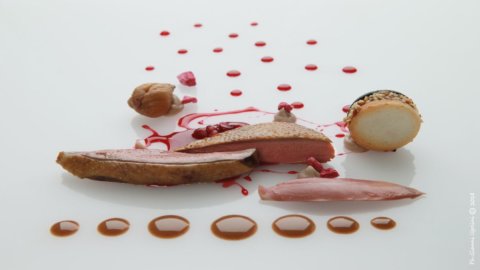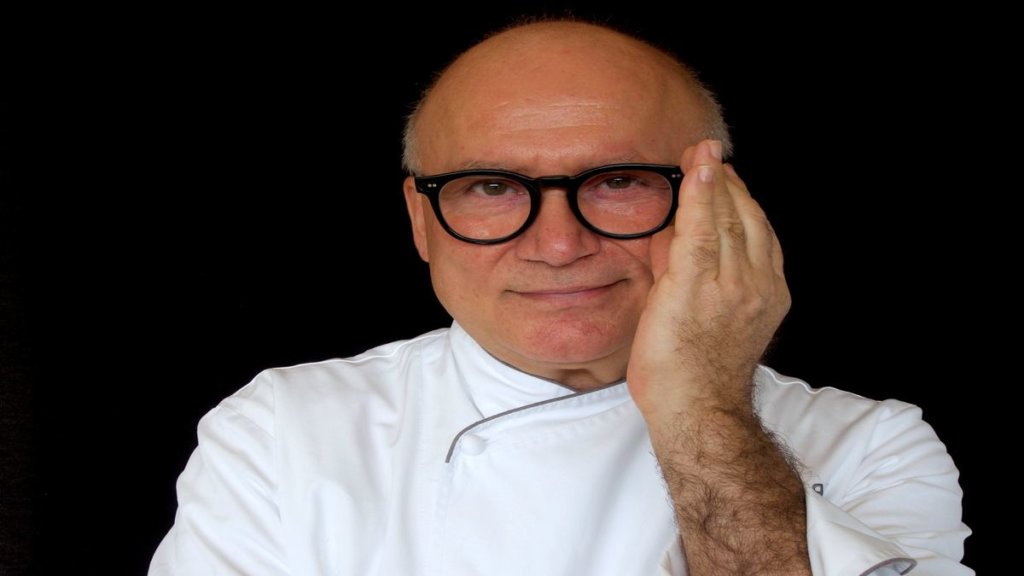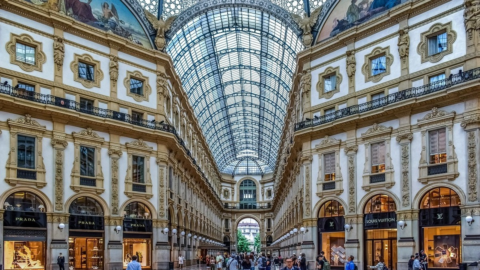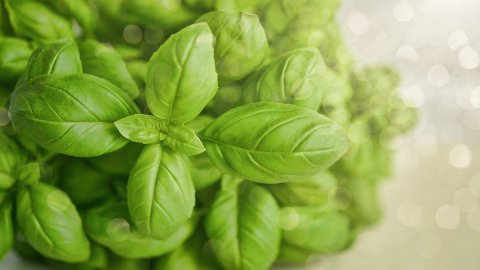A story of travel to the north like there have been many in the history of the Sicilians. But in the case dthe Gaetano Trovato, the great chef at Arnolfo di Colle Val d'Elsa, two Michelin stars, great master chef in love with Tuscany this story is not only a happy, it has a very happy ending. Because in the historic and beautiful Sienese town, which was the birthplace of Arnolfo di Cambio sculptor, architect and urban planner who worked between the end of the 200th and the beginning of the 300th century between Rome and Florence, the young Gaetano immediately settled in well child. He had arrived there at six years old with his mother Concetta da Scicli, pearl of the Sicilian Baroque, revealed to the world thanks to the adventures of Inspector Montalbano, who here began working in a restaurant as a cook and he soon ended up helping out in the family. Perhaps it will be due to the atmosphere that reigns in the Sienese area that Gaetano Trovato would soon develop two great aspirations: flying high, fruit of the just severity of the mother, a woman in one piece, who combined filial love with a strong sense of duty and work; and the desire to create a sort of cenacle around him, perhaps influenced by the great Sienese and Tuscan artistic workshops of the fourteenth and fifteenth centuries that have determined the history of the culture of our country, in his case, however, a cenacle of a gastronomic nature open to the beauty of the territory and nature to which to attract the new generations.
Conquered the hotel diploma the young Gaetano, undergoes the influence of the great innovative wave of French cuisine and the revolutionary nouvelle cuisine. And he leaves for one of the great protagonists of that season, the legendary Roger Vergé ideologist of the cuisine du soleil who from his Moulin de Mougins on the Côte d'Azur sprays the dictates of French cuisine all over the world.
But the real, fundamental experience for Gaetano Trovato, which will profoundly mark his culture and training, is the one lived with Angel Paracucchi, one of the fathers of Italian creative cuisine, who with his "Locanda dell'Angelo", in Ameglia, whose structure was designed by none other than Vico Magistretti, one of the greatest Italian architects, became a temple of study for subsequent generations of grains chef. But Paracucchi was much more: one among the first Italians to be awarded the Michelin Star, e first Italian to land – this caused a sensation – in Paris with his “Il Carpaccio” inside the historic Royal Monceau hotel which needless to say he immediately won a Michelin star there as well.
Paracucchi's great intuition was to have created - in distant years not only in chronological order but also in terms of the culture of the cooks of the time - a cuisine of revaluation and exaltation of the heritage of traditional products, land and sea, to then compare it with the use of traditional cuisine and in inventing new combinations by applying techniques, never used before, more respectful of the products.
“If I think about the days at the Locanda - recalls Maurizio Marsili, another great chef who was his pupil - I impressed his gaze when he discovered a new product. He looked at it with the curiosity of a child and then ran to study every aspect, try every nuance. He paid particular attention to the acidity in the dish, which he translated from time to time with the use of red wine, green tomato, candied lemon. His relationship with food was very physical, he loved simple gestures, contact with matter”.
All this love for simplicity and naturalness Gaetano Trovato has assimilated and metabolized into his gastronomic DNA by constantly continuing to experiment with it by adopting new solutions always with religious respect for the perceptive immediacy of the flavors of his cuisine. He himself admits: “with Paracucchi I learned to bring taste into life”, principles that today support its professionalism which is based on three watchwords: “Transparency, innovation and rigour” who is keen to underline “they are some of the most important values that we have inherited from our family and that I wanted to put in my kitchen. Our goal is to enhance quality without pomp".
Principles that today, at the height of his career, strong of two Michelin stars. three forks from Gambero Rosso, the Emerging Chef Award from Gambero Rosso, the three stars of Veronelli, the mention "Exceptional" on the Espresso Guide, he passes on to the young people who go to his cenacle at the Arnolfo where he has had a laboratory expressly dedicated to the courses created. Young people have passed through here who today have grown up as top national chefs such as Nino Di Costanzo, the great two-starred chef of Ischia, Eugenio Boer, Michelino Gioia, Aurora Mazzucchelli, Matteo Lorenzini, Matteo Manzini, Alberto Sparacino, Filippo Saporito, Simone Cipriani , Ivan Ferrara, Alessandro Cozzolino. And others will continue to pass.
Because for someone in love with his work like Gaetano Trovato having young people next to him, transferring knowledge and treatment of the raw material to them is a moment of wealth and professional satisfaction more than anything else. “I'm sure he declared recently – that every chef in the world agrees on the fact that the kids we have the pleasure of having in our kitchens become like children to us. I see in them the desire and determination that I had at their age, at the beginning of this long journey that has accompanied me for most of my life.
The recipe that the chef offers to Mondo Food readers contains all the flavors of autumn. Seasonality is the fulcrum of this dish in which the colours, acidity and aromas of the pomegranate marry perfectly with the intensity and creaminess of the chestnut. It is a greeting to the season which is about to end before the arrival of the reverse, a journey through woods and countryside, crossing expressions of authenticity that the chef exalts, component by component, bringing out their most authentic soul and the great meaning of their tradition in our eating habits.
Laura Peri's pigeon recipe, pomegranate and chestnut
Ingredients for 4 people:
– 2 pigeons
– 80gr Clarified butter
– 200g fresh butter
– 2 bunches of herbs (thyme, laurel, rosemary)
Procedure for the pigeon in carcass:
Cook the two pigeons, previously boned and gutted, in a copper pan in light butter. Sear both pigeons on the skin side for a few minutes and coat the breasts until they are almost half cooked. Remove them from the pan and place them in the oven at 205°C for 1 minute. Once out of the oven, let them rest at a temperature of 50°C for about 12 minutes. After the standing time, remove the breasts from the carcass and brown them on the skin side until golden and crispy.
For the biscuit filling:
400gr Pigeon legs
200gr see finely chopped
80 g Vin Santo
30gr extra virgin olive oil
150g pigeon liver paté
Put a drizzle of oil in a rondo and sear the pigeon legs at high temperature with a pinch of salt. Once browned on both sides, add the shallots and the bouquet garni and cook. Then deglaze with the vin santo. Let's cook with vegetable broth. Once cooked and without the bones, finally beat them with a knife and tie them with a little pigeon stock and liver pâté.
For the cream of glazed chestnuts with Fondo
10 whole chestnuts
50 g. pigeon fund
Cut the chestnuts and cook them in a non-stick pan over moderate heat for about 10 minutes with the lid on. Turn them from time to time to make cooking homogeneous. Once cooked, peel them.
To serve, place the chestnuts in a saucepan and add the stock, taking care to reduce it until it becomes a glaze.
Chestnut cream
1kg of cleaned chestnuts
1,5 lt milk
500mL of water
Flavorings (laurel, thyme, juniper)
50 gr butter
5 Shallots
Cook the chestnuts in milk, water and herbs.
In the meantime, sauté the shallots and a bunch of aromatic herbs. Once cooked, drain the chestnuts and add them to the pan. Blend the chestnuts until you have a smooth and homogeneous mixture. Help yourself with the cooking liquid if necessary.
For the biscuit
200gr flour 00
200g ointment butter
200g egg white
150 gr powdered sugar
3 gr salt
In a container, combine the butter, sugar, salt, egg whites and finally the sifted flour. Separate the mixture into two parts, leaving one half natural while adding 5 g of charcoal to the other half. Roll out the dough and with the help of cylindrical silicone moulds, cook at 170°C for 8/10 minutes at low ventilation.
Fill the biscuits (1 white + 1 black) with the filling obtained previously and pass the biscuit in the chopped hazelnuts
Pomegranate gel
500mL of filtered pomegranate juice
3,5 g of agar agar
Bring 2/3 of the juice to the boil and add the agar agar. Cook for 2 minutes and cool. Blend until the mixture is smooth and homogeneous, using the remaining juice.
Pomegranate salad
1 pomegranate
Extra virgin olive oil
Sale
For this recipe, the chef recommends pigeons from Laura Peri's company, breeder of Valdarnese White Chickens, recovered from extinction but also poultry ducks and guinea fowls who have structured a supply chain within the company that starts from reproduction, incubation , growth, feeding, slaughtering up to marketing, all under his direct management
Arnolfo restaurant
Via XX Settembre, 50,
53034 Colle di Val d'Elsa SI
By reservation only
Phone: 0577 920549






